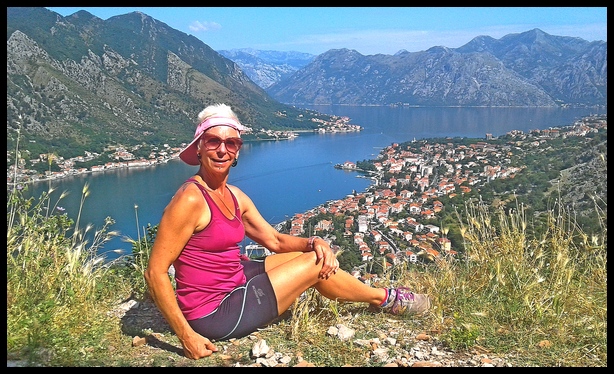
high above Kotor Bay – Montenegro
13 Things I Love about Eastern Europe
This year has been my first time exploring Eastern Europe and the Balkan countries. In fact, it’s the first time I’ve explored any European countries in depth.
I have previously briefly visited England, France and Spain, but that’s about it. So this year kicked off my first real explorations of Europe.
Since Western European countries are so expensive, and because of the 3-month Schengen Territories rule, I decided to begin my European adventures in the Balkans. I also extended my explorations into a few more northern European countries as well.
Thus far I’ve spent six months explored nine countries: Montenegro, Albania, Macedonia, Kosovo, Bulgaria, Romania, Poland, Slovakia and a two-week visit in Budapest, Hungary.
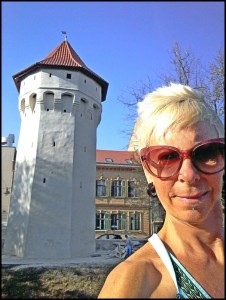 I’m having a great time and really enjoying most of the places I’ve visited. I love the gorgeous & varied historic cities, towns, castles, churches, mosques and cathedrals. I’ve learned a lot of in-depth history at museums and guided walking tours. And I’ve admired a lot of great artwork.
I’m having a great time and really enjoying most of the places I’ve visited. I love the gorgeous & varied historic cities, towns, castles, churches, mosques and cathedrals. I’ve learned a lot of in-depth history at museums and guided walking tours. And I’ve admired a lot of great artwork.
I also love the region’s beautiful & diverse natural places that include beaches, rocky coastlines, cliffs, lakes, fjords, rivers, canals, soaring mountains, forests and even stunning city parks.
I’ve also enjoyed some delicious cuisines, regional alcohols and tasty desserts in most of these countries.
Over all, the people in this region of the world are outwardly rather stone-faced, un-smiling and stand-offish. It took me quite a while to get accustomed to that after spending so many years in smiling, cheeful S E Asia and then in smiling, friendly Latin American.
Gradually, I learned that beneath the Eastern Europeans’ exterior coldness, most people are genearally kind, helpful and well-meaning.
Real stand-outs, though, have been the Romanians and Albanians. Unlike the generally non-smiling, outwardly cold people I’ve met elswhere, I found that Romanians and Albanians are super helpful, friendly and welcoming. Romanians even smile, laugh and seem to have a good time together!
All of this is a quick summary of what I like most about Eastern Europe.
Following is my more in-depth observations of travel & daily life in this fascinating region of the world.
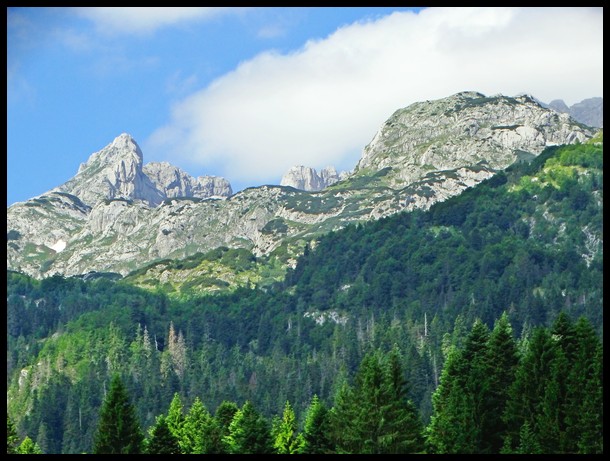
Durmitor National Park
Things to See & Do
1. Stunning Nature with Great Diversity
As I mentioned above, the region is full of beautiful & diverse natural places that include beaches, rocky coastlines, cliffs, lakes, fjords, rivers, canals, soaring mountains, forests and even stunning city parks.
Of the countries I’ve vistied thus far, the most beautiful, in my opinion, are Montenegro and Albania. Both have really dramatic, stark mountains & river gorges as well as long coastlines along the Adriatic Sea with plenty of beaches,
In particular, the fjord-like Kotor Bay in northern Montenegro is especially stunning. Durmitory National Park in northern Montenegro and Valbona Valley in northern Albania are equally gorgeous, featuring spectacular, dramatic graggy mountains and beautiful, pristine forests.
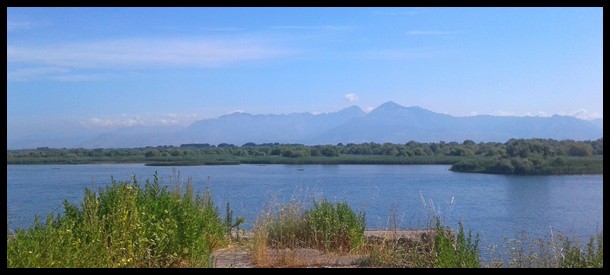 I enjoyed several other beautiful places in Montenegro and Albania. I later visited some pretty lakes and mountains in Macedonia, though they weren’t as dramatic or stunning as Montengro or Albania.
I enjoyed several other beautiful places in Montenegro and Albania. I later visited some pretty lakes and mountains in Macedonia, though they weren’t as dramatic or stunning as Montengro or Albania.
I’m currently enjoying the beautiful coastline and beaches of the North Sea in Bulgaria.
Quite unfortunately, I missed visiting various mountain regions in Slovakia, Romania and Bulgaria due to difficulty of reaching them by public transportation, high costs of staying the areas and, more recently, due to winter setting in. Much too cold for mountains for me right now! Lol
But I will continue exploring the Balkan countries next year. I still have to visit Serbia, Bosnia & Hergovia and Croatia. I’ve heard from other travelers’ I’ve met that all of them are beautiful.
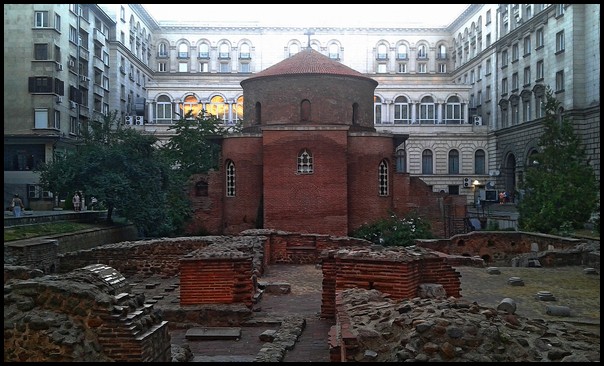 2. Fascinating History
2. Fascinating History
The history of this region goes way, way back to 600 BC or earlier. It’s a very complex history with many different original native tribes & races as well as several major empires that have swept through the area and taken control for hundreds of years at a time. In more recent history, all of these countries have been directly involved in WWII and then take over by the Soviet communist regime.
Each country here has had a slightly different original races, ancient historical development and run-ins with Hitler’s regime then the Russians. But many countries had been enveloped in the Roman Empire, the Byzantine Empire and the Ottoman Turk Empire. All these cultures, and many more, have left their traces behind – in buildings, cuisine, religion, daily customs, language and genes.
That all makes this region of the world really fascinating to explore and learn about. I’ve learned a tremendous amount about different regional tribes, empires, cultures and the specific experiences of cities, citizens and whole countries during WWII and life under Russian communism.
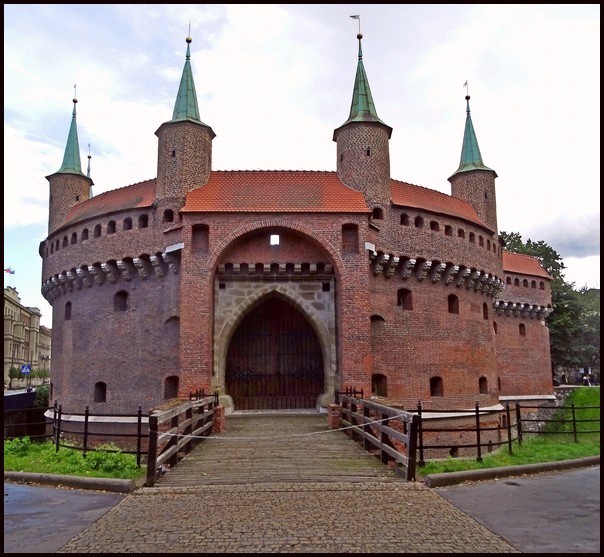 3. Gorgeous and very Diverse Architecture
3. Gorgeous and very Diverse Architecture
Thanks to the region’s long, complex history, I have seen a lot of amazing & diverse architecture in this region of the world!
Scattered around various modern-day countries are the churches, mosques, architecture, castles, forts, fortified cities and various ruins from the Romans, Byzantines, Illyrians, Greeks, Austro-Hungarians, Ottoman Turks, Slavs and others.
More modern architecture includes several centuries of always-evolving European architectural styles – Medieval, Gothic, Neo-Gothic, Baroque, Roccocco, Renaisance, Neo-Classic, Art Deco and others.
Here in Eastern Europe, I’ve seen some of these styles, like Byzantine, Medieval churches & fortified towns and Ottoman Turk style buildings, for the first time in my life. Even more interestingly, I’ve seen several architectural styles that I never even heard of before. Such as the Maldavian Church in Timisoara,, the French Ecclectic style buildings in Bucharest and the …style church, also in Bucharest.
Since I’m so enamored of architecture and interior design, exploring this region of the world is an absolute delight for me. I’m especially crazy about Baroque, Medieval and Gothic architecture.
When I explored several Medieval castles, towns, churches in Transylvania, Romania, I feelt like I was inside a movie set in Medieval times!
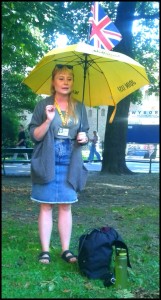 4. Free Walking Tours
4. Free Walking Tours
Several major cities in this area have at least one company offering free walking tours. Some of the companies even offer a selection of 4-6 different walking tours.
The guides rely on guests’ tips for their living, so it’s a good idea to give them something – whatever fits your budget. But the guides don’t get upset Math people who leave nothing. They really take an easy-going attitude about it, seeing the tips as an optional donation.
I’ve really enjoyed many great, informative free walking tours in the cities I’ve visited. They are a fantastic way to learn about the country and city’s history, key historic buildings and local culture.
Daily Living
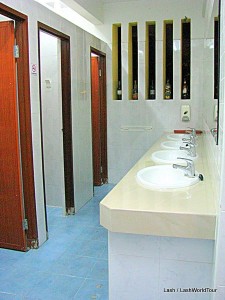
common bathroom in a hostel
5. Hot Showers
Those of you brought up and living in Europe, North America, Australia – in the major 1st world countries probably take hot showers for granted. They are an ‘of course!’ in daily life in America and Europe.
But I can tell you first hand that hot showers are not de rigeour / to be expected part of daily life in many places of the world. At least not for a majority of residents or for budget travelers, like me.
In many places hot showers are genereally not needed, such as the tropical countries of SE Asia, Central America and Mexico. Budget travelers in these regions pretty much have to deal with cold showers.
Unfortunately for me, I happen to love steaming hot showers and baths, even in the tropics. But I’ve had to go for years on end with only cold showers, which was something I’ve never loved about traveling/living in SE Asia and Central America.
The upswing of that now is that I absolutely appreciate the super hot showers I’m finding all over the Balkans and other Eastern European countries. Even hostels and $10 private rooms come with near-scalding hot showers. It’s simply wonderful.
6. Indoor Heating
Like hot showers, indoor heating in winter is something Americans also take for granted. I did too until I lived in Kyoto, Japan and then traveled the world.
Since setting out on my world travels in 1998, I have traveled in many cold places, during cold wintery months like November and December, where, despite the cold temperatures outdoors, the buildings have no indoor heating. And that includes guest rooms, hostels & hotels. I’ve slept in unheated rooms at 10C / 50F and even as low as 5C / 40F with no heat whatsoever.
I’ve experienced that in Nepal, the northern Indian Himalaya staates of Himachal Pradesh and Utterakand, mountainous areas of Costa Rica, cities in the central Mexican plateau and even Japan.
That is not my favorite way to sleep, I can tell you.
Here in Eastern Europe, as we’re heading into autumn, even approaching winter months, it’s now a real delight to find myself inside houses, apartments, hostels, restaurants and shops that are actually warm. In most of my private rooms and hostel dorms I can even control the heat temperarture myself. It’s a dream!
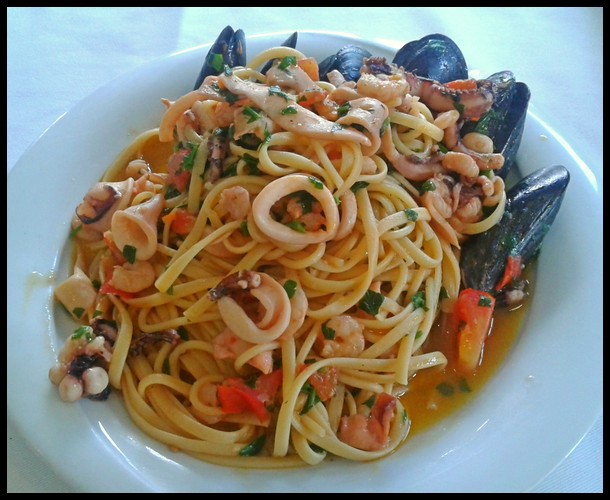 Great Food
Great Food
7. Cafeteria-style Restaurants
One thing I always loved about traveling around SE Asia is the ease of eating hot cooked meals. Thailand, Malaysia, Indonesia and most other countries in the region have many cafeteria-style restaurants that make eating fast, easy and convenient. Various pre-cooked dishes are on display in big cases. Customers simply point out what they want. Staff dish it out. Pay. Sit down & eat. Done.
Quite happily, I’ve found these type of restaurants in a few Eastern European countries, particularly Bulgaria, Romania and Poland. The food is varied, healthy and quite tasty. It sure makes eating easy!
8. Wonderful Breads & Pastries
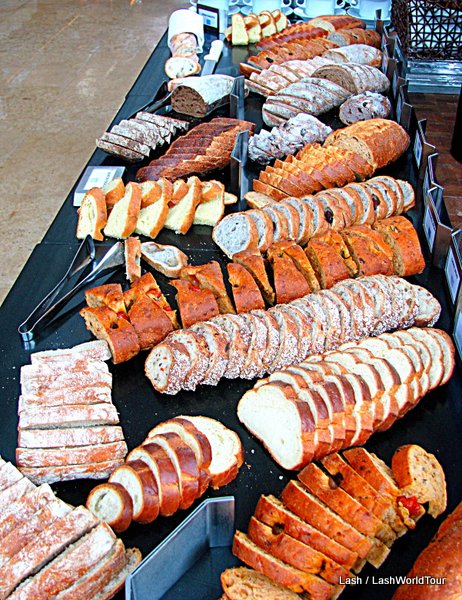
selection of breads at the Breakfast Buffet

common bathroom in a hostel
I spent about 15 years of my life traveling/living/working around SE Asia. The coutnries there are not especially noted for good breads, cakes or pastries. None of that is part of their traditionally cuisines, which are based primarily on rice and noodles.
More recently I spent 3 years exploring Mexico and Central America. Those countries have more or less terrible breads and bakeries. Their cuisines are based on tortillas and rice.
So it’s a real delight for me here in Eastern Europe to find really delicious breads. And not just one or two types, but a huge selection of different breads.
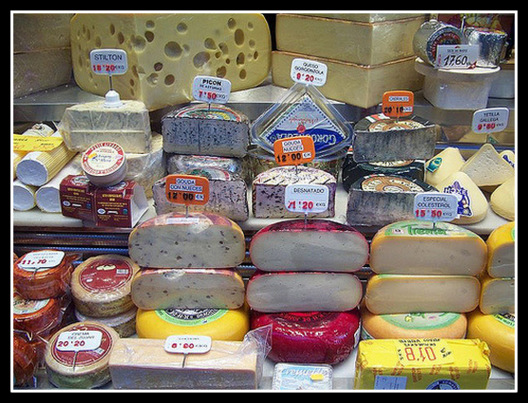
cheeses photo by rjhuttondfw on Flickr CC
9. Great Selection of Cheeses & Yogurts
Asian countries don’t have a tradition of dairy products in their diets. And many people in Asian countries don’t especially like cheese, yogurt or other dairy products…except for maybe milk and icecream!
In Mexico and Central America, they do eat cheeses and yogurts, but the selection is very limited.
I spent so many years traveling in regions without much cheese and yogurt, that it’s a real treat for me here in Eastern Europe to visit super markets – or even strictly cheese stores – where there’s a huge selection of cheeses. And at cheap to reasonable prices, too!
 10. Quality Chocolate
10. Quality Chocolate
The very best chocolate in the world comes from Europe, particularly from Belgium and Switzerland. At least in my opinion. My favorite chocolate brands are Lindt (Swiss) and Godiva (Belgiam).
Those really high-quality chocolate brands are not so easy to find in most places around Asia or Central America. Asia is not known for its chocolate, which is not part of its traditional culture. Nor do many places in Asia grow or process cacao.
In Central America, cacao plantations and chocolate production actually have lng histories in several countries. I’ve tried several brands of locally-produced chocolates. But non of them compare to my beloved Lindt 70% or 85% dark chocolate… or else they cost considerably more.
Here in Eastern Europe, I can find Lindt chocolate in most places, at least medium and large cities. I can buy it right in the supermarkets! I’ve also found a few other quality chocolate brands that are nearly as good as Lindt, sometimes at a much lower price.
Like finding good cheeses, breads and pastries, it’s a real delight for me to be traveling around a region where I can find excellent chocloate so easily.
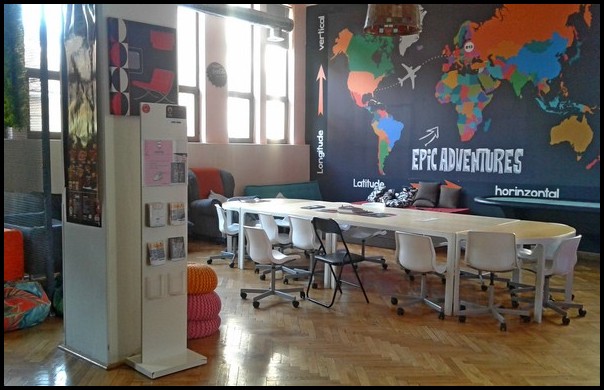 Travel Logistics / Aspects
Travel Logistics / Aspects
11. Inexpensive Accommodation
Budget accommodation is quite easy to find nearly everywhere in the Balkans and Eastern Europe. Prices do vary somewhat from country to country, but there are hostels everywhere as well as inexpensive private room options via Booking.com and AirBnB.
In most of these countries, the going rate for a hostel bed is about $8-10 US, which is quite reasonable. In a few major cities, like Krakow, Poland; Tirana, Albania; Budapest, Hungary; Sofia, Bulgaria and Bucharest, Romania, dorm beds are even cheaper, in the range of $6-8 US per night.
On the other hand, in some places like Bratislava, Slovakia; Kotor, Montenegro and most small cities in Romania, hostel beds cost more like $12-15 US and up. Although that’s really cheap compared to the cost of dorms in western European countries, I personally think it’s on the expensive side for a simple bed in a shared dorm.
A great thing I discovered early in my travels of this region is that private rooms via Booking.com and AirBnB often cost about the same price as dorm beds in hostels! I stayed in many nice private rooms for $10-12 US per night. In a few cases, I found great rooms for as little as $5-6 US! These were generally special cases, such as a host establishing a new room by getting reviews from the first few guests. But that generally works for me!
There are also many Couch Surfining hosts in most cities & towns in the region, although I wasn’t very lucky finding any, except a couple times in Montengro. Many work exchange options are also available in the area.
During my six months of travel in this region, my nightly accommodation costs varied from $5-25 US per night, plus a few nights of free accommodation via couch surfing. Generally I spent about $8-11 US per night, and my nightly average over all for six months has been .
This makes the region on par Math SE Asia, Mexico and Central America in terms of accommodation costs.
 12. Inexpensive & Easy Transportation
12. Inexpensive & Easy Transportation
Getting around all these countries by public transportation is really simple and geneeerally inexpensive. Every country has a great, regular and extensive bus network for overland travel. Some countries also have trains, at least for some areas.
Cities also have regular, extensive bus networks and usually also trams & trolleys.
Prices vary somewhat from country to country, but all are reasonably priced. Typical costs for an overland journey of 2-4 hours is around $5-15 US.
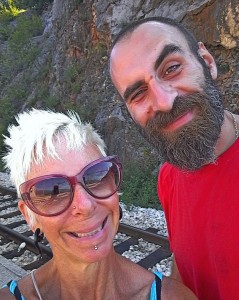 13. It’s Safe
13. It’s Safe
Some people might have misgivings about the safety of travel in certain Balkan countries, particularly Serbia, Bosnia & Hergovia, Albania or Kosovo. After all, there have been some pretty bloody wars here not so very long ago.
Luckily, those wars ended years ago. Long enough ago that tensions have ceased, travel warnings have long-ago ended and the whole region looks, feels and, in fact, is quite safe.
In fact, all the Balkan countries are now big tourist destinations with very good tourist infrastucture and enough locals speaking good English to make communication relatively easy. Locals in most places will also help out visitors in need.
In the nine months I’ve been traveling around this region, I’ve never felt any danger, threat or aggression. I’ve never had anything stolen, despite many hostel doors being unlocked or buses/subways being crowded.
I’ve also met many other travelers roaming around the region, who’ve reported the same experiences.
The most travelers may have to be wary of in this regtion are pick-pockets in big cities like Krakow, Poland or Budapest, Hungary. But petty theft is an issue in big cities all over the world, so it’s just common sense to be careful with your possessions.
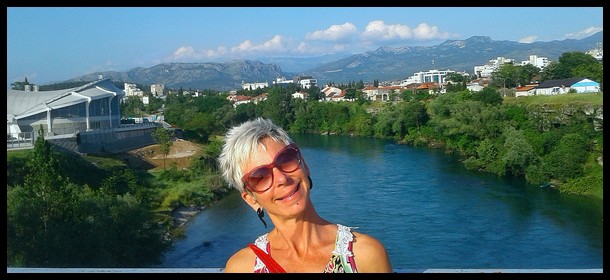
Lash at Moraca River – Podgorica – Montenegro
Summary
That sums up all the things I most love about Eastern Europe. I’m really happy that I can enjoy this part of the world as much as I loved SE Asia, Mexico and Central America. I guess it just goes to show that nearly every place is the world has great things to see, do and learn.
You might also like:
Introduction to Krakow, Poland
=========================================







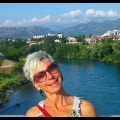




 Hi! I'm Lash, an American nomadic world traveler who's been traveling solo since 1998. I’m passionate about traveling the world nomadically and then sharing it all with you. I hope to inspire you to travel the world, to entertain you with tales from the road, and to help you reach your travel dreams. Welcome!
Hi! I'm Lash, an American nomadic world traveler who's been traveling solo since 1998. I’m passionate about traveling the world nomadically and then sharing it all with you. I hope to inspire you to travel the world, to entertain you with tales from the road, and to help you reach your travel dreams. Welcome! 




2 pings
2020 Travel Plans
2020/01/07 at 5:46 pm (UTC 8) Link to this comment
[…] 13 Things I Love about Eastern Europe […]
Differences between US and European Cities - LashWorldTour
2020/08/11 at 8:48 pm (UTC 8) Link to this comment
[…] 13 Things I Love about Eastern Europe […]